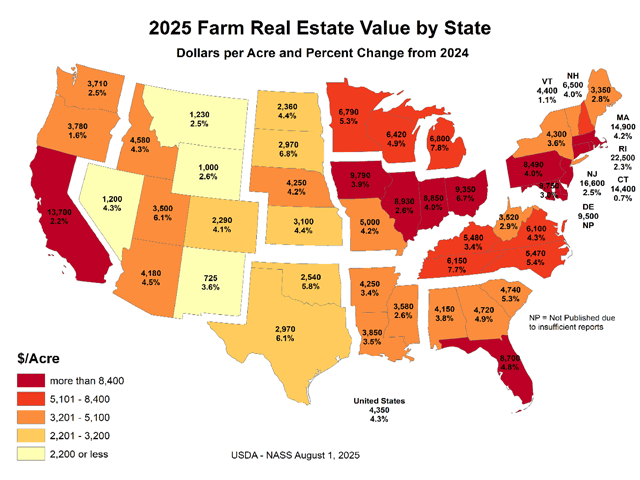Rewarding Risk
Stocker Strategy Keeps High-Risk Calves Healthy
For more than 30 years, Mike Goldwasser has made a living buying other people's mismanaged calves. It's a tough side of the business, but the Hillsville, Va., cattleman has fine-tuned an approach that makes it workable.
In this part of the country, the average size cow herd is 30, with many owners working off-farm jobs or growing row crops as their primary income. Many make do with limited cattle facilities, meaning bulls often run with cows year-round. This leads to the sale of a lot of unweaned calves at local stockyards, usually at light weights. Most haven't had vaccinations and they are stressed, making them high risk for health problems.
Stocker operators who are skilled at keeping high-risk animals healthy and are willing to risk $500 to $600 on a bawling calf can usually eke out a decent return on the gamble. Goldwasser is that sort of operator.
He raises the stakes by grazing 300 lightweight heifers, ranging from 350 to 400 pounds, on homegrown forage. Then he sells them at 725 pounds in 50,000-pound truckloads or sends them to Kansas feedlots in a retained ownership plan. His goal is to never send a sick animal to the feedlot.
"The key is keeping them healthy," he says. "And despite the possibility that my heifers weren't sired by bulls with EPDs for high marbling, they average over 80% Choice. I receive a premium on the animals that are Choice on the grade and yield grid."
P[L1] D[0x0] M[300x250] OOP[F] ADUNIT[] T[]
EXCEEDING EXPECTATIONS
Few animal health products really change a cattleman's outlook and lifestyle, but 68-year-old Goldwasser says a metaphylactic antibiotics (mass medication) program with the drug Excede makes life on his farm more pleasant.
"I used to get up in the morning and wonder how many calves would be sick that day. I dreaded going to the pastures and looking at the heifers. Now, I leave home thinking all my calves will be healthy and grazing. This program has honestly improved my outlook on life," says the veteran stocker producer.
In the past, morbidity on his lightweight calves was as high as 20%, and death loss ran 2% to 3%. After adopting the Excede metaphylactic program, morbidity has dropped to less than 3% and death loss is under 1%. The cost of Excede is based on weight and averages $8 per head for a 350-pound animal, Goldwasser explains.
Over 35 years, the stocker operator has developed a receiving program that he believes works well for the highly-stressed calves he handles. His heifers are purchased by an order buyer and Goldwasser picks them up at the sale barn in truckloads of 30 to 35 head. He hauls them home quickly, releasing them into a half-acre pen with high-quality grass hay and clean water. While space is adequate, it's not roomy enough for the unweaned calves to walk far as they bawl for their mothers. After a while, the young stockers settle down and eat some hay.
The day after arrival, Goldwasser quietly works the calves by himself and turns them back into the pen. The heifers have access from the pen to fresh grass in an adjoining pasture. To prevent the spread of illness, he avoids having other animals share the fenceline in adjacent paddocks for the first month.
GOLDWASSER'S HEALTH PROGRAM
In the initial trip through the chute, Goldwasser gives calves the Excede injection, a modified live five-way (IBR, PI3, BRSV and two strains of BVD) vaccination, a clostridial (blackleg) vaccination and a pour-on dewormer (Dectomax.) Parasite control is important, so a second dose of Dectomax is given after six weeks on pasture. The calves also receive a coccidiostat (Rumensin) mixed in the feed.
Forage management is the backbone of the whole stocker strategy. Goldwasser buys calves in mid-January and February and runs them on stockpiled fescue while the forage lasts. Next, he feeds high-quality hay until grass greens up in the spring. During their time at the farm, the animals receive 1% of their body weight daily in a pelleted feed supplement that is 12% protein and 80% total digestible nutrients (TDN).
"Managed intensive grazing plays a big role in my stocker program," he says. "Using a large number of paddocks allows me to keep new calves separated when they first arrive and helps me have high-quality forage during the grazing season. High-quality forage is important for these little calves," Goldwasser stresses.
During winter, the heifers gain 1 1⁄2 pounds per day, but their frames are still growing, and the gains will go up to 2 pounds a day when the grass greens up. After that first month, the chance of stockers falling sick decreases, and Goldwasser runs them in larger groups through the intensive grazing rotation.
"In a stocker operation, you earn your money the first month," Goldwasser says. "After that, you don't have to watch the animals quite as closely."
(VM/CZ)
Copyright 2013 DTN/The Progressive Farmer. All rights reserved.





